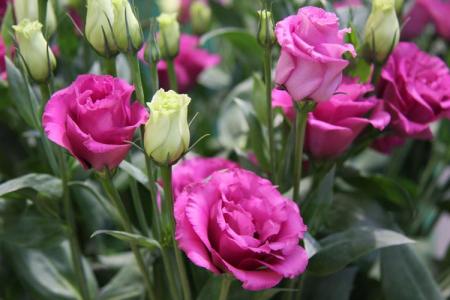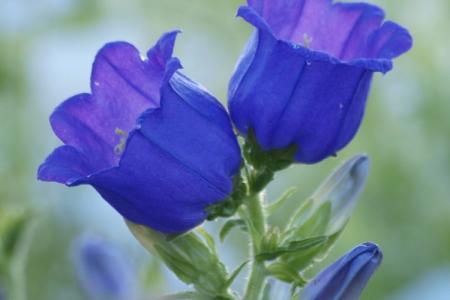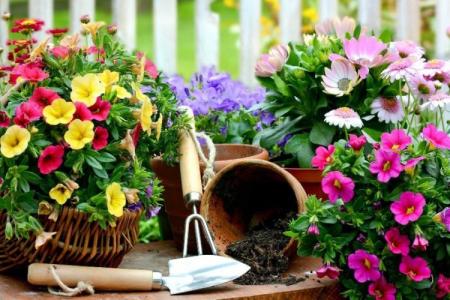
Once you see a magnificent flowering field, you will no longer be able to forget it. The wind flutters colorful buds, there is a unique aroma around, the sun's rays are poured everywhere. Many of these plants have medicinal properties, and some of them can be grown in your garden. Especially for you, we have prepared a selection of meadow and wildflowers with names and photos!
1. Goose bow
Unusual yellow flowers resemble small lilies with a bright honey scent. A short flower with disproportionately long leaves is used in medicine and cosmetology.
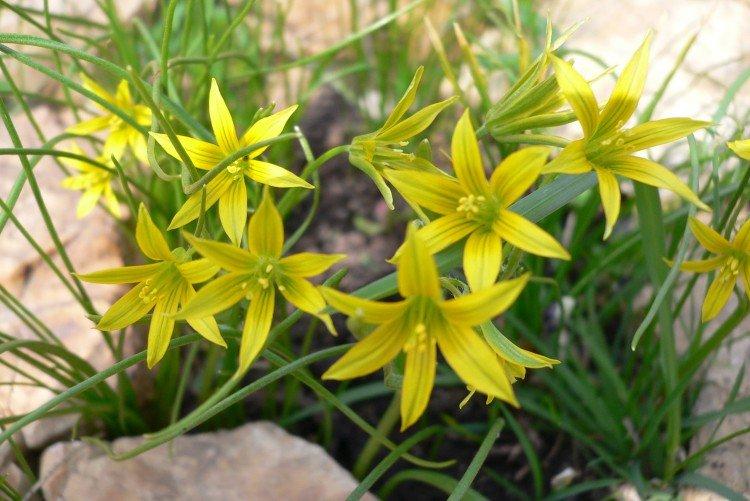
2. Armeria
Bright armeria with ball inflorescences is not afraid of frost and drought. She feels great on rocky soil, adapts to sandy soils and is extremely unpretentious.
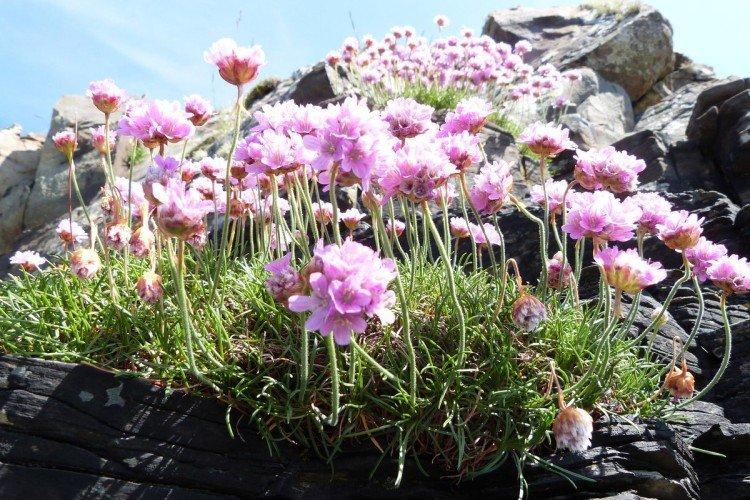
3. Lupine
Hundreds of species of lupine have spread throughout the world and have learned to survive in any conditions. When planting, a lupine needs more space, because it will simply "crush" more delicate neighbors.

4. Elecampane
The whimsical yellow blossoms resemble a cross between dandelion, chamomile and chrysanthemum. The bushes are quite tall, stretch up to a meter and feel great both in single and in group plantings.

5. Geranium
Meadow geranium is a herb with small pale blue flowers. It is popular in kidney harvests, and in the garden it pleases with an expressive aroma.
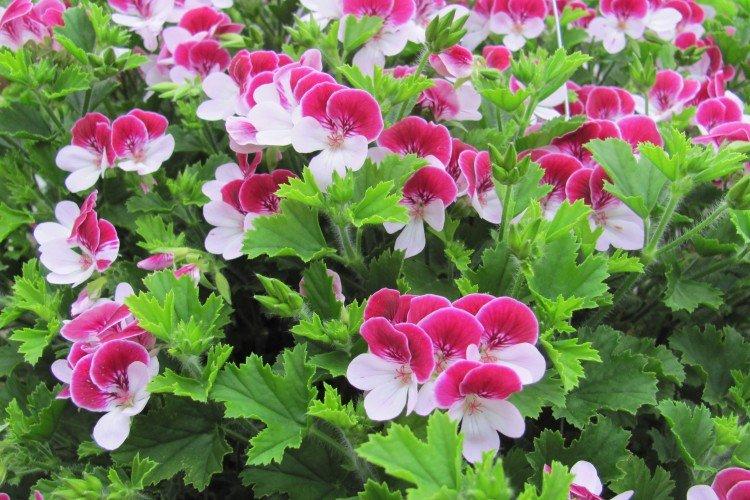
6. Bell
The popular herb has several hundred species, including rocky and desert ones. You can choose varieties for any conditions, unless they all do not tolerate stagnant water.
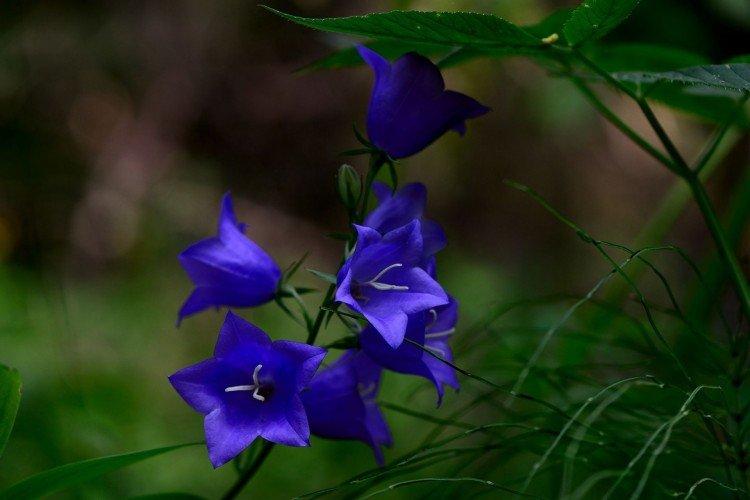
7. Donnik
The tall sweet clover stretches up to 2 m and is considered one of the tallest wildflowers. In addition to bizarre racemose inflorescences, densely covered with small yellow flowers, it also has unusual leaves that resemble a three-toed paw.

8. Highlander
Small flowers are collected in inflorescences-spikelets, and over time they turn into fruits, like nuts. The rhizome of the mountaineer, buckwheat or serpentine is used as an astringent and anti-inflammatory agent.

9. Clover
Hybrid pink clover is so undemanding to conditions that it grows as a common weed in cities. It is not grown for decoration, but it is used to feed livestock. There is also a creeping clover that covers the ground with a solid dense carpet.
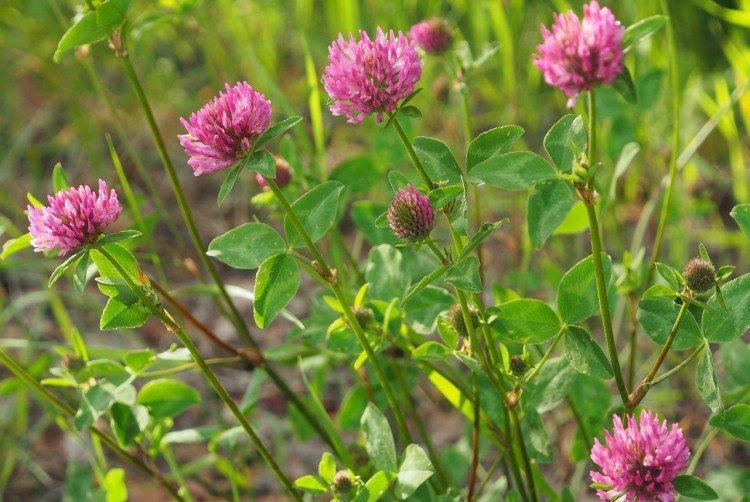
10. Delphinium
Luxurious tall delphinium in all shades of azure and lilac has long migrated to the gardens. It is difficult to grow and needs to be protected from the wind, but in return, an adult plant pleases with lush pyramidal inflorescences.

11. Adonis
The adonis resembles small wild carnations, but prefers wet and swampy terrain. An unpretentious perennial is found in the most severe regions of Siberia, Altai and the Caucasus.

12. Fireweed
You probably know this flower called "Ivan-tea". Fireweed is quite vigorous, feels good on dry and sandy soils, and dried leaves are brewed instead of tea.
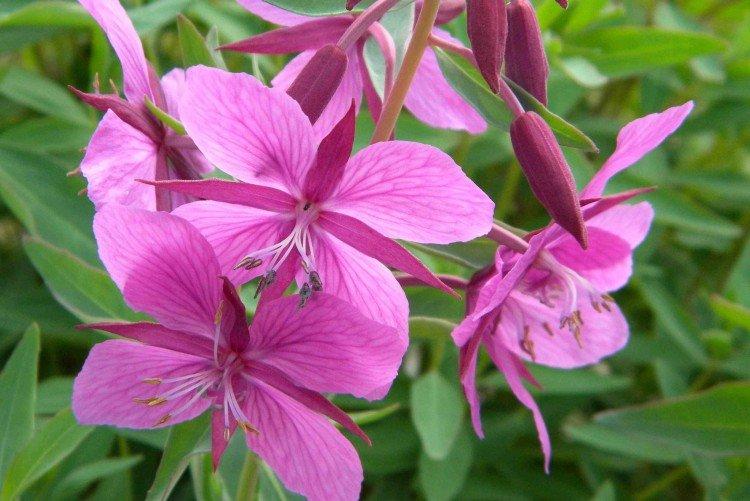
13. Chicory
This is not only a healthy drink, but also a cute blue-blue flower that comes from fields and meadows. Unknowingly and from a distance, it can be confused with a cornflower, only the chicory is tall and branched - up to 1.2 m.
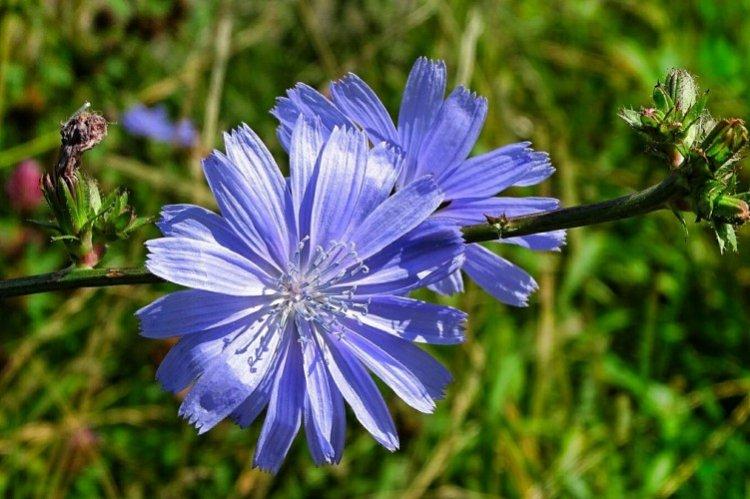
14. Larkspur
Although this field annual is classified as a weed, in fact it is the closest relative of the garden delphinium. On the farm, it is used as a green manure for the preparation of pest control products.

15. Iris
Delicate and decorative irises - in real life, an ordinary wildflower, and not at all a capricious garden diva. There are hundreds of plant species in different sizes, shapes, and all kinds of shades.
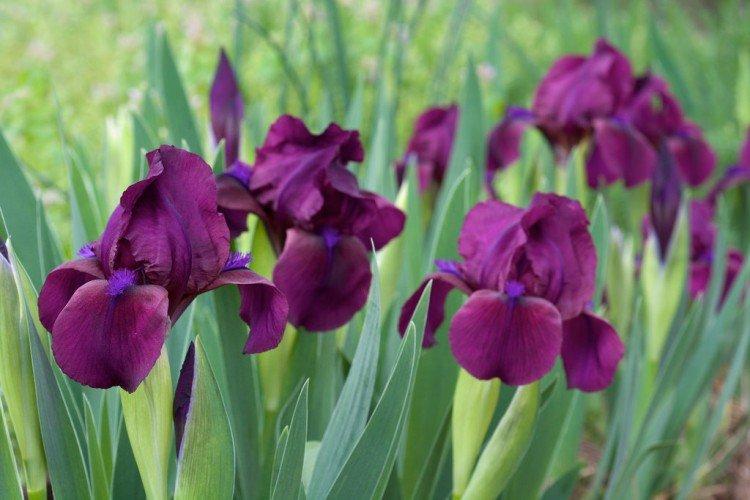
16. Aquilegia
Delicate aquilegia is grown in areas near water bodies, because it loves moisture very much and is not afraid of frost. The most common flowers are blue, but there are other shades as well.
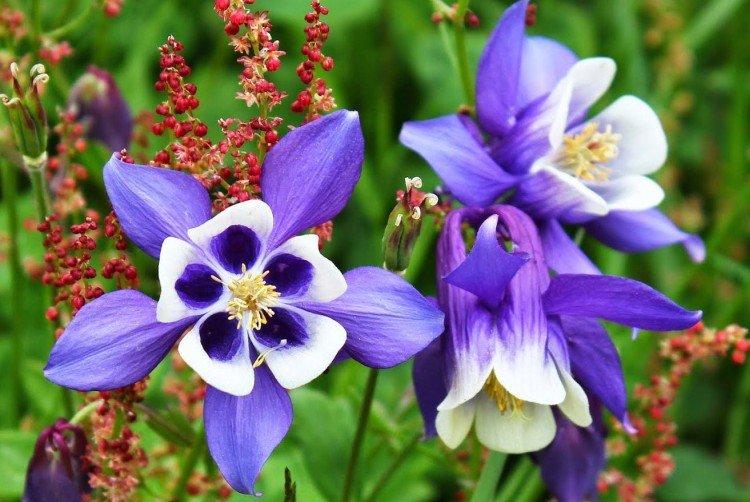
17. St. John's wort
The familiar pharmaceutical herb in boxes is actually a perennial yellow flower. Previously, it was used to heal wounds and instead of a natural dye.

18. Backache
A very unusual lumbago resembles a mixture of a tulip and a bell with pubescent petals. Long hairs cover the stem and leaves of the plant, making it appear furry.
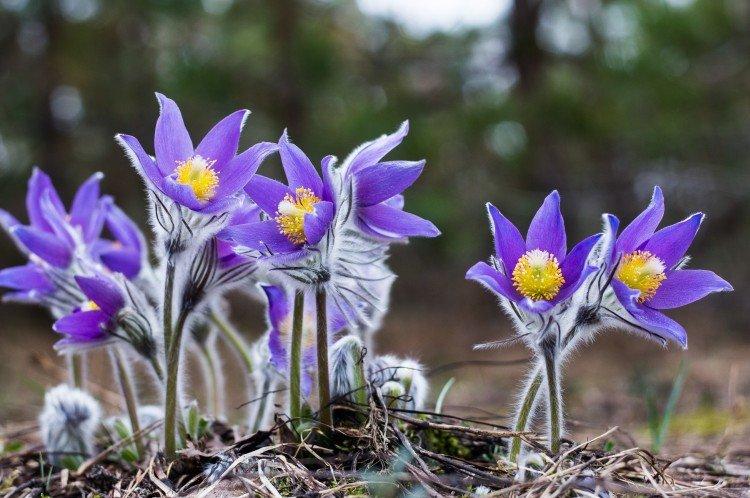
19. Gentian
Large blue and blue bells of gentian cover the tall shrubs up to 1.5 m. The plant is used in herbal collections for the treatment of stomach, anemia and heart failure.
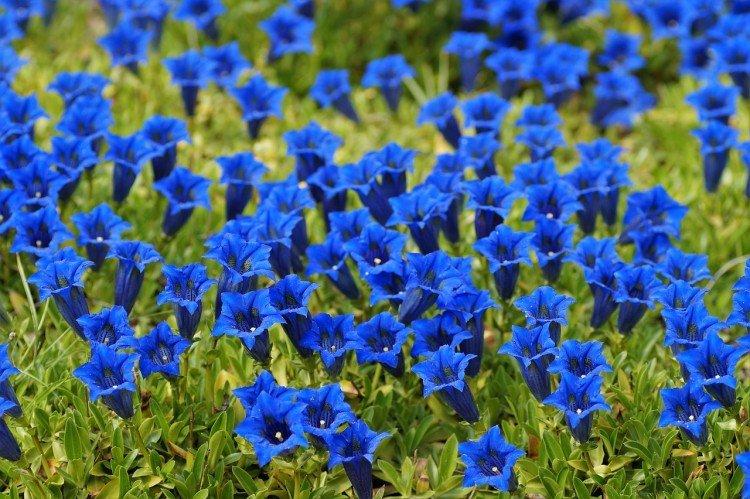
20. Zopnik
The perennial meadow shrub attracts flower lovers with a variety of species. It is often used in landscaping because, even before the flowers appear, the leaves form an attractive green carpet.
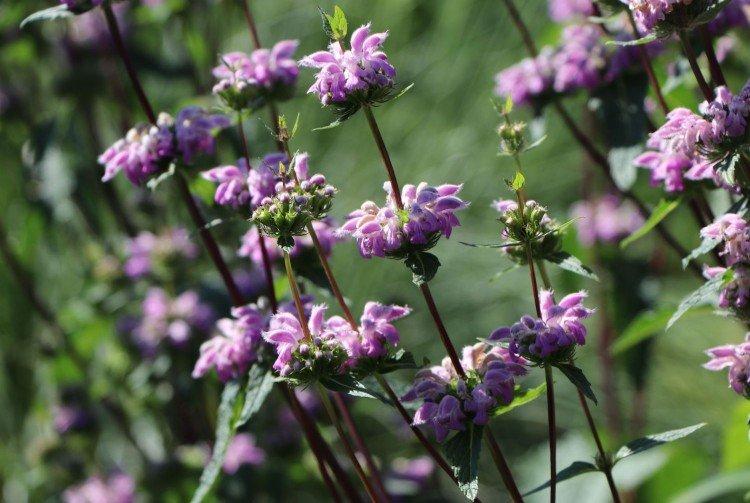
21. Chamomile
What meadow can do without a huge chamomile field that seems to be reaching for the sun? In the garden, selection daisies bloom flowers up to 15 cm in diameter, but in nature it is usually smaller, but more fragrant.
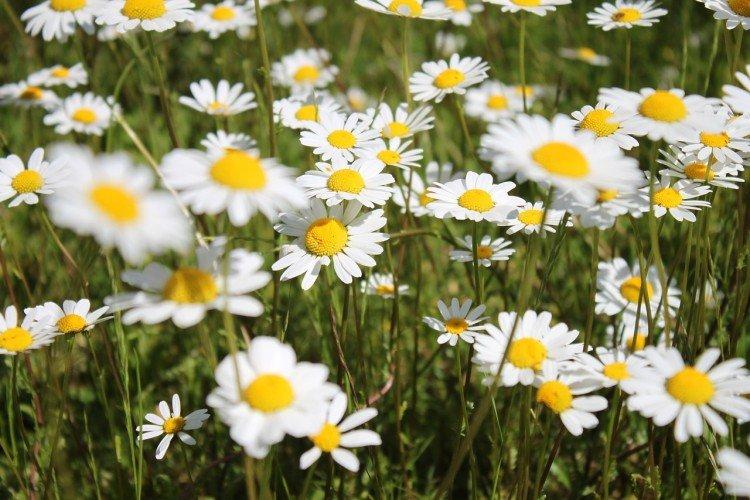
22. Cornflower
Blue cornflower is one of the most recognizable flowers in the field, and its shade has not yet been replicated by breeders. In fact, this is not one flower, but an inflorescence-basket, which looks very unusual up close. There are even smaller meadow cornflowers.
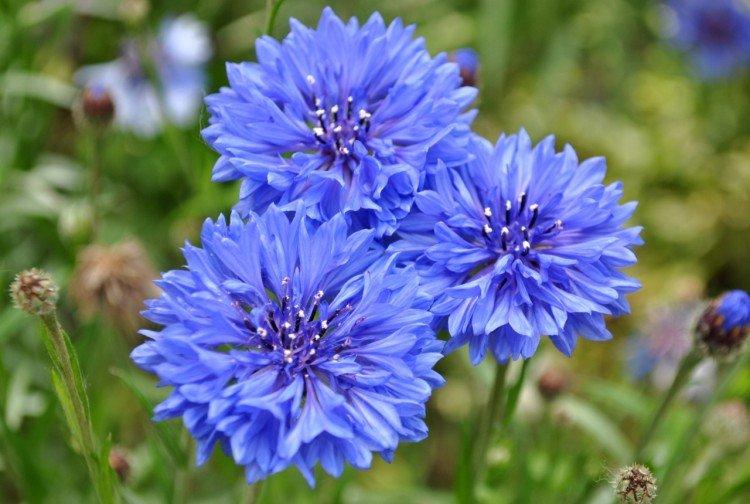
23. Poppy
Dozens of types of poppies differ not only in the shape of the inflorescence, but also in the shade. There are not only scarlet, but also white, blue and yellow poppies that stand out in the same way in a field or garden. For the next 5 years after planting, the flower practically does not need care.

24. Tansy
Bright yellow tansy with its strong scent blooms almost all summer. In the garden, it is also grown to repel pests, and bouquets of tansy are expelled from the house of flies and mosquitoes.

25. Aconite
Aconite is loved for its large and voluminous inflorescences of a rich purple color. The plant adores the sun, does not need the obligatory shade and stretches up to 2 m.

26. Burnet
Behind the discordant name is a very spectacular meadow flower with small maroon inflorescences. Burnet feels good near swamps and water bodies on the site.

27. Dandelion
Dandelions are known for their amazing vitality and ability to germinate even in asphalt cracks. The roots penetrate so deeply into the ground that it is almost impossible to bring out uninvited flowers in the garden. But they are used for fertilizing and repelling pests, in cooking, as a honey plant.

28. Comfrey
At first glance, a comfrey with modest purple bells does not seem particularly noticeable. But it is widely used in medicine to stop bleeding and purulent processes, relieve inflammation, and treat injuries.

29. Toadflax
For the specific shape of the buds, toadflax is also called "wild snapdragon". A low-growing plant easily propagates and grows without any significant requirements for soil and watering.

30. Amaranth
Amaranth looks like a tropical plant because of its lush red brushes, but it is a resident of its native meadows. He loves the sun and moisture, so he gets along well with other tall inhabitants of the fields.


